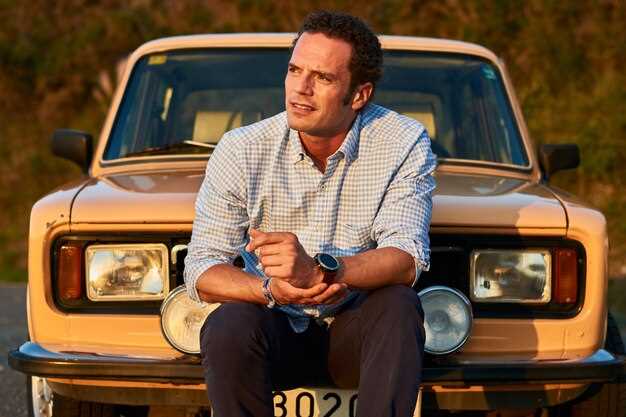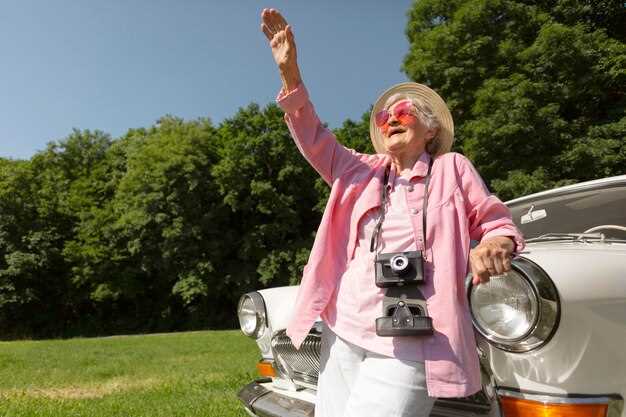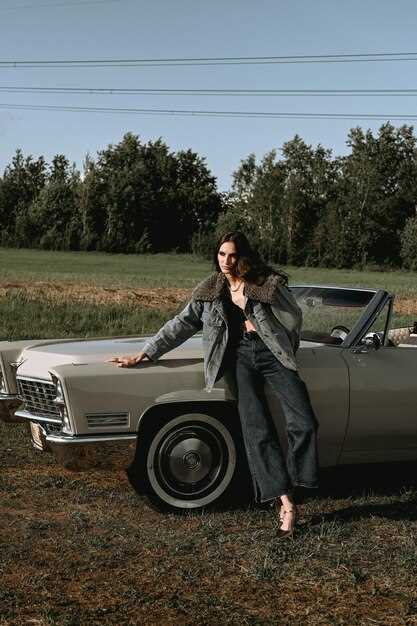
In the world of classic car sales, the saying “a picture is worth a thousand words” holds especially true. Vintage vehicles have a unique charm that can capture the hearts of enthusiasts and collectors alike. However, to translate that passion into successful sales, high-quality photography is essential. A captivating image not only showcases the intricate details of a classic car but also tells a story that resonates with potential buyers.
When it comes to selling vintage cars, the first impression is crucial. Stunning photographs can create an emotional connection, which is a key factor in influencing purchasing decisions. By focusing on the aspects that make these cars special–like their timeless design, craftsmanship, and historical significance–sellers can enhance their appeal. This article will explore the techniques and strategies that can elevate your car photography, leading to increased interest and ultimately, successful sales.
Understanding the art of car photography requires an appreciation for the various elements that contribute to an attractive image. Factors such as lighting, composition, and background can dramatically impact the perception of a classic car. By employing thoughtful photography techniques and presenting vehicles in the best possible light, sellers can transform their listings into compelling showcases that attract serious buyers.
Moreover, embracing the nostalgia and romance associated with vintage automobiles can be a game changer. Storytelling through images can evoke feelings of longing and attachment, making potential buyers envision themselves behind the wheel. In this article, we will delve into the key aspects of creating captivating photos that not only highlight the beauty of classic cars but also enhance their sales potential.
Choosing the Right Lighting for Vintage Car Photography
When it comes to capturing the essence of vintage cars for sales, lighting plays a crucial role in showcasing the vehicle’s unique character and intricate details. Proper lighting can significantly enhance the aesthetic appeal of classic automobiles, making them more enticing to potential buyers.
Natural light is often the best choice for vintage car photography, as it brings out the car’s rich colors and textures without harsh shadows. The golden hours, shortly after sunrise and before sunset, provide a soft, warm light that complements the vintage aesthetic beautifully. This natural glow highlights the elegant lines and curves of the car, creating an inviting atmosphere.
In addition to natural light, the use of reflectors can help manage shadows and add depth to the photos. By positioning reflectors to bounce light onto the car’s surface, one can eliminate unwanted dark spots and emphasize key areas, making them stand out more in the frame.
For indoor settings, using soft box lights can mimic the soft quality of natural light. It’s essential to avoid direct, harsh lighting, which can lead to overexposed highlights and loss of detail. Instead, diffused lighting creates an even illumination that enhances the car’s vintage charm.
Another effective technique is the use of backlighting. When positioned behind the car, the light can create a stunning halo effect, emphasizing the vehicle’s silhouette. This technique can evoke a sense of nostalgia and allure, drawing potential buyers into the image.
Ultimately, experimenting with different lighting setups allows photographers to find the perfect balance that captures the vintage car’s essence while making it appealing for sales. Understanding how different lighting affects the appearance of the car is key to producing captivating images that attract buyers.
Essential Angles to Showcase Classic Car Features

When selling classic cars, capturing the right angles is crucial to highlight their unique features. Here are essential angles that can enhance your car sales photography:
- Front Three-Quarter View: Showcases the car’s aggressive stance and design. This angle typically highlights the front grille, headlights, and body contours, making it appealing to potential buyers.
- Side Profile: This angle allows buyers to appreciate the overall shape and length of the vehicle. It emphasizes the classic lines and silhouette, essential for attracting enthusiasts of vintage models.
- Rear Three-Quarter View: Captures the tail design and exhaust features. It’s perfect for revealing the unique aspects of the rear and can evoke nostalgia among viewers.
- Close-ups of Distinct Features: Take detailed photos of the interior, dashboard, engine bay, and wheels. These shots help buyers assess the condition and craftsmanship of specific components crucial for classic cars.
- Low Angle Shots: Position the camera close to the ground to create a powerful perspective. This view can emphasize the car’s height, wheel design, and stance, making it more imposing.
- High Angle Shots: Capturing the classic car from above can provide a unique view of the roofline and allow for a comprehensive look at the features in the context of the surroundings.
By incorporating these essential angles into your photography, you can effectively showcase the unique features of classic cars, making them more appealing to potential buyers and enhancing your sales efforts.
Post-Processing Tips for Enhancing Vintage Car Images

Post-processing is essential for elevating vintage car images to capture buyers’ attention and drive sales. Start by adjusting exposure levels to ensure that the car’s details are vividly displayed without losing highlights or shadows. Use the histogram as a guide to balance the light and dark areas effectively.
Next, consider enhancing the colors. Vintage cars often have unique paint jobs, so it’s crucial to bring out the rich, historical tones while maintaining authenticity. Utilize hue and saturation adjustments to emphasize the vibrancy of the car’s paint without making it appear unnatural.
Sharpening is another critical step. Apply selective sharpening to the key features of the vintage car, such as chrome details and body lines, to draw focus and create a sense of depth. Avoid over-sharpening, which can introduce unwanted noise, as clarity is vital in marketing these classic beauties.
Don’t overlook the power of cropping. A well-framed image can dramatically enhance the visual appeal. Aim for dynamic compositions that showcase the car’s curves and angles, helping potential buyers envision the classic beauty in their lives.
Finally, consider adding a subtle vignette effect. This technique draws the viewer’s eye toward the center of the image, where the vintage car is positioned. A slight darkening of the edges can create a more immersive experience, emphasizing the car as the focal point for successful sales.




